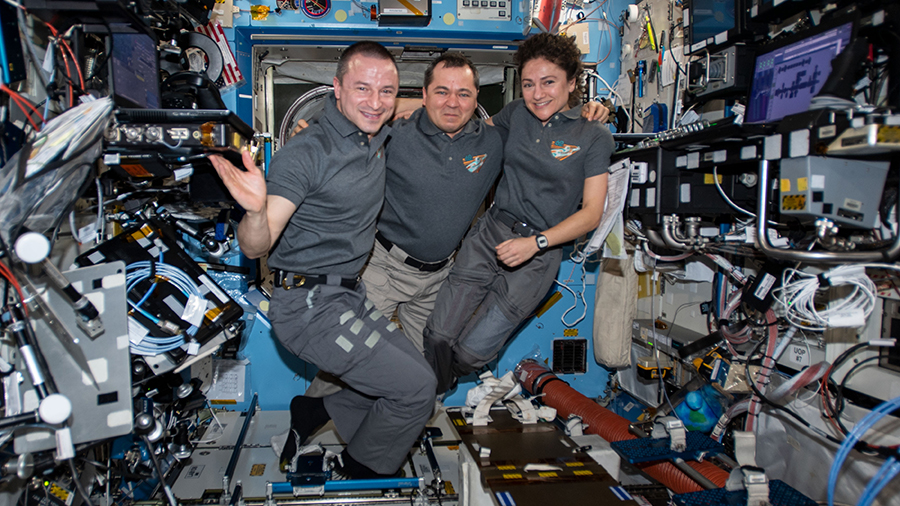
The Expedition 62 crew focused on a variety of human research and space biology studies aboard the International Space Station today. Back on Earth, three new crewmembers are in training in Russia before their mission begins in April.
Microgravity shifts the flow of body fluids, such as blood and water, which accumulate in an astronaut’s head creating pressure in the cranium and on the eyes. Doctors are continuously studying this phenomenon to counteract the effects and keep long-term space crews healthy.
In preparation for upcoming operations with the ongoing Fluid Shifts study, NASA astronaut Andrew Morgan collected medical hardware, such as an ultrasound device, sensors and cables. He transferred the research gear to the Russian segment, where they will be used to test a specialized body suit that draws fluids toward the lower body expanding veins and tissues.
Morgan then moved on to a Japanese study that looks at how weightlessness affects genetic expression in mice. Results may inform future therapies that keep crews safe in space and prevent muscle atrophy conditions on Earth.
NASA Flight Engineer Jessica Meir relaxed on Monday aboard the orbiting lab after working Saturday afternoon on cardiac research. She serviced heart cells being manipulated and analyzed with magnet-sensors and stowed them in a science freezer. The space samples are being compared to cell cultures on the ground possibly benefitting human cardiac function on Earth and in space.
Commander Oleg Skripochka began his morning on a long-running Russian study exploring how cosmonauts will pilot spacecraft and even robotic rovers on future planetary missions. During the afternoon, he turned his attention to life support maintenance.
Over in Russia, three Expedition 63 crewmembers are getting ready for their launch to the space station on April 9. NASA astronaut Chris Cassidy and Roscosmos cosmonauts Anatoly Ivanishin and Ivan Vagner wrapped up two days of Soyuz qualification exams last week. They will have a news conference this Friday before heading out to the Baikonur Cosmodrome in Kazakhstan on Tuesday, March 24. Once there, the crew will be in final preparations ahead of their 195-day mission in space.

I’m always very curious about know the effect of microgravity on developmental genetics of plant and animal. Thanks NASA.
Hello Monzur. Botany research on the space station helps NASA learn how to grow food in space. Animal research looks at mice and smaller organisms for insights into therapies to protect astronauts living on space. Of course, the research on the station has benefits for humans on Earth too. More info…
Plant research: https://go.nasa.gov/2FkDgFN
Animal research: https://go.nasa.gov/2U0vitT
Easy and nice way to hear what important experiments are taking place in space.
Thanks!